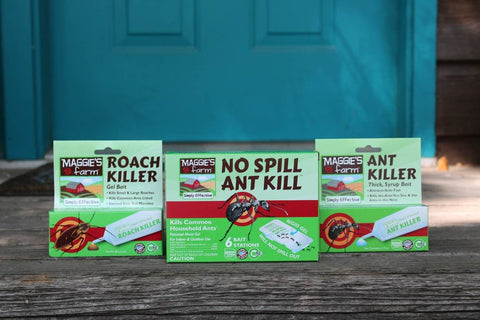Ants come in all shapes, sizes, and colors. A common description for these pests is tiny and black. Being able to put a name to the ants scurrying around your space can help you keep them out of your home. We’ve gathered information about tiny black ants to help you identify and eliminate an infestation.
Common Tiny Black Ants

While there are many ant species in the world, only some can end up in your house and yard. Check out a few common ants that fit the description of tiny and black and like to hang out in homes.
Little Black Ants
These ants get the top spot for being labeled tiny and black. Worker ants are about 1/16ʺ in length. They have a shiny, black body. These ants feed on a variety of things including meat, oil, produce, and grease. They prefer to nest under rocks and logs. If they make their way into your home, they hide in woodwork and wall voids.
Odorous House Ants
Odorous house ants grow between 1/16ʺ–1/8ʺ. They can be dark brown or black. These ants release a rotten coconut scent when crushed. They like to eat sweets including the honeydew aphids secrete. They nest under wood or in soil and near sources of water in your home.
Crazy Ants
These crazy bugs are small and run fast in an irregular pattern. They range in size from 1/16ʺ–1/8ʺ. They can be dark brown or black. Crazy ants feed on honeydew, fruit, and other insects. These ants aren’t picky when it comes to nesting sites. They’ll live in your home or outside in soil, plants, and wood.
Acrobat Ants
Acrobat ants are a little bigger than the others on the list, averaging about 1/8ʺ. They have a light brown to black body. You can identify this species by their heart-shaped abdomen. Acrobat ants eat proteins and sweets. They prefer to nest in areas with plenty of moisture. These ants often settle down in moist wood.
Are Tiny Black Ants Dangerous?

These small ants are mostly just a nuisance. They can invade in large numbers, but they won’t cause damage to your home. Little black ants do have a stinger but because of its size, they’re not harmful. Acrobat ants can bite if they feel their colony is under attack. These ants may also release an unpleasant odor when threatened or disturbed.
How to Prevent Ants in Your Home

Dealing with an ant problem is never fun, which is why preventing an infestation is always ideal. Check out a few tips to keep ants out of your home.
- Remove Attractants: Ants will be less likely to invade your home if you remove potential food sources and minimize moisture.
- Seal Entry Points: Take the time to examine your home for places where ants can enter. Seal cracks and gaps and repair or replace torn screens.
- Minimize Harboring Sites: Keep your yard free of clutter and yard debris. Trim your plants so they aren’t touching the side of your home and regularly mow your lawn.
- Create a Protective Barrier: Our Yard Bug Spray kills ants and other pests while providing you with residual repellency protection. Spraying the perimeter of your yard can help keep ants out.
How to Get Rid of Tiny Black Ants

Our No Spill Ant Kill and Ant Killer Bait can help to eliminate an ant infestation. Baits are designed to attract and kill these small pests. Ants feed on the bait and take it back to the colony to share with other ants. This helps to eliminate the source of the infestation and keep your home ant-free. Our Roach Killer Gel Bait also kills ants and is good to use if ants are searching for protein instead of sugar.
The first step to getting rid of pests is being able to identify them. The next time you spot tiny black ants, you’ll know what you’re up against. If you’re dealing with a pest problem, we have your back! Check out our Maggie’s Farm Simply Effective™ Pest Control products for a more environmentally and family-friendly solution.
